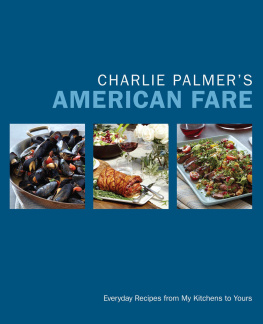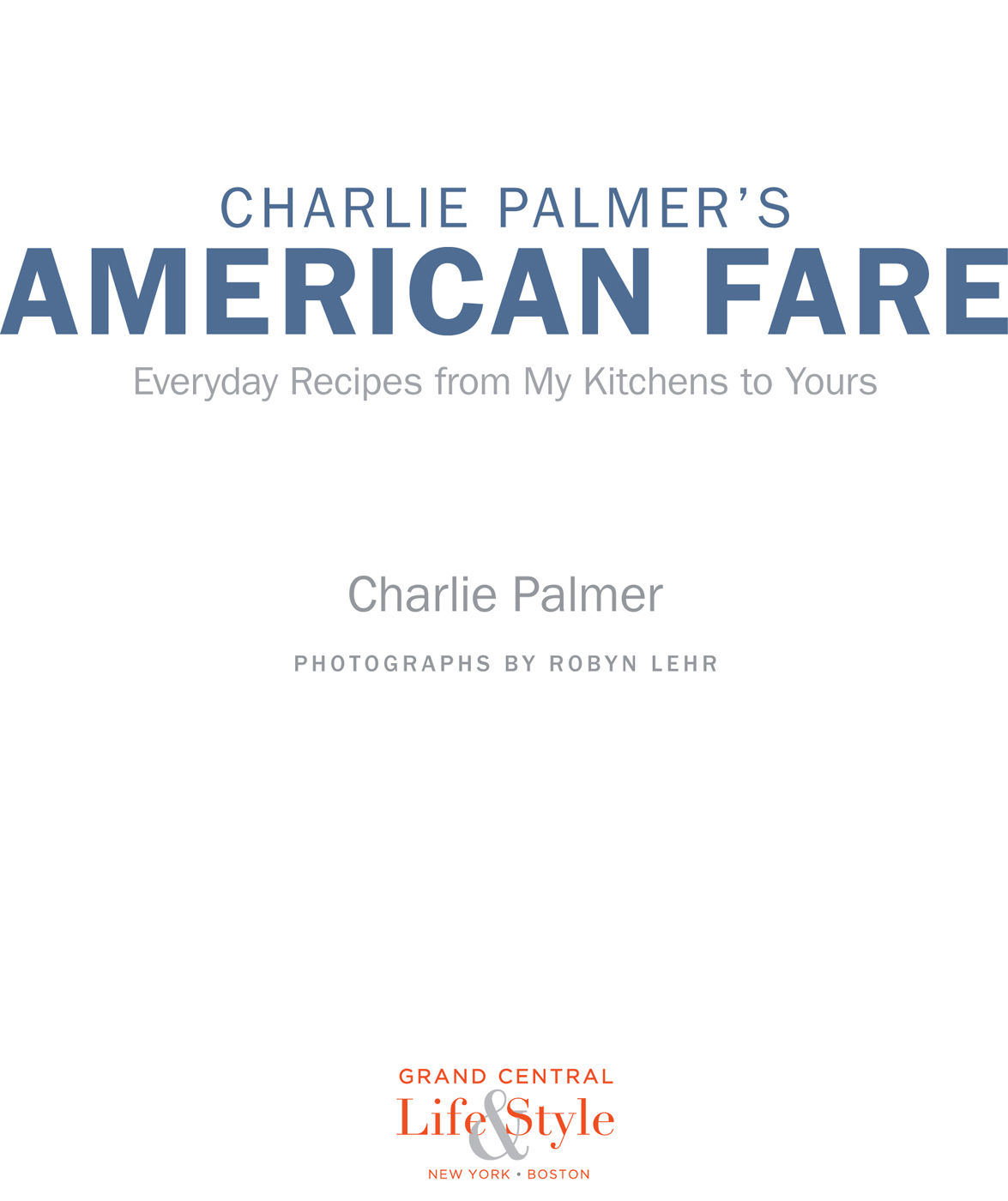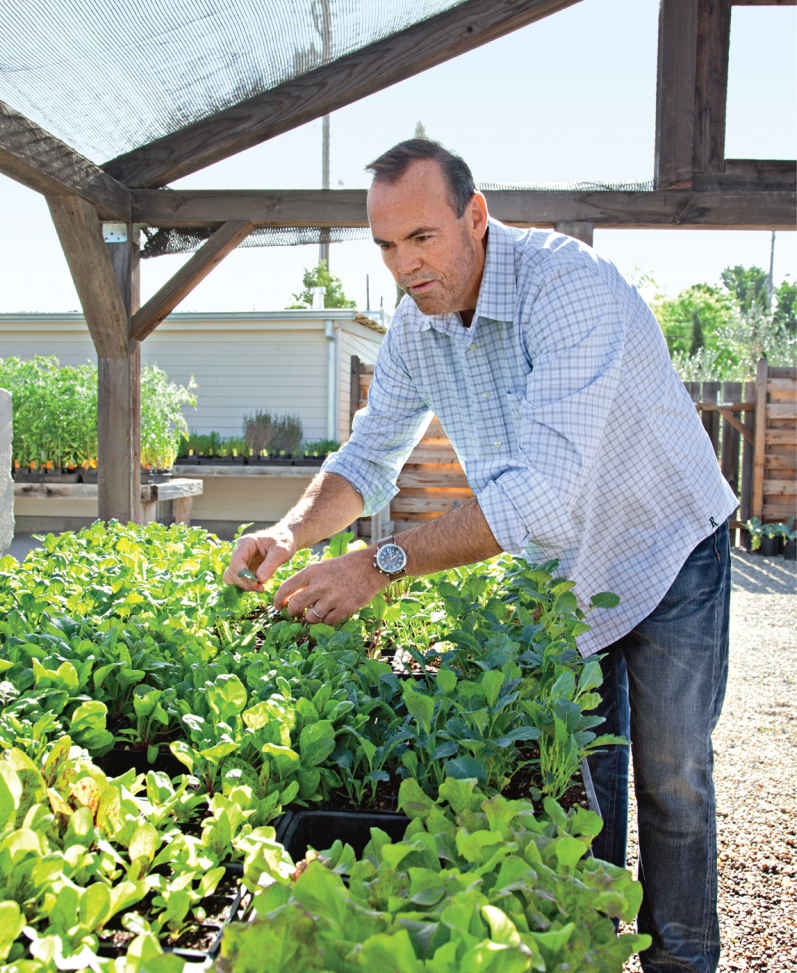In accordance with the U.S. Copyright Act of 1976, the scanning, uploading, and electronic sharing of any part of this book without the permission of the publisher constitute unlawful piracy and theft of the authors intellectual property. If you would like to use material from the book (other than for review purposes), prior written permission must be obtained by contacting the publisher at permissions@hbgusa.com. Thank you for your support of the authors rights.
To Courtland, Randall, Eric, and Reed: Everything always tastes better when we are eating it together. You are my greatest achievements.
To Lisa: Thank you, my love, for sharing dinners, glasses of wine, and your life with me, our four boys, and our dreams.
To my CPG team: You inspire me daily.
PROGRESSIVE AMERICAN COOKING:
IN THE RESTAURANT KITCHEN AND AT HOME
IT SHOULD COME AS no surprise that cooking is a rewarding profession. Seeing peoples satisfaction as they put fork to mouth has remained one of the most sincere joys Ive experienced in my thirty-five-year career and throughout my life. But Ive come to realize two very important things about cooking: First is that the time I have spent cooking for my family has been the most rewarding. Im incredibly fortunate to have four sons and my wife, Lisa, all of whom appreciate food and sharing time together around the table. Second, I take a huge amount of pride in teaching the young cooks and culinary students in my restaurant kitchens. Things have come full circle for me in that respect. I graduated from the Culinary Institute of America in 1979 and am now currently the chairman of the board of trustees of that school, helping to improve the quality of the education we provide to those young cooks every day.
When I began my culinary adventure in 1974, I had no idea of the magnitude of cuisines and products that would come to play in the invention of new American cooking or how they would impact the everyday American diet. Of course, I didnt know that I would become the father of four boys or have the opportunity to live in New York City, the most exciting city in the world, as well as Sonoma County, California, one of the most beautiful and agriculturally productive areas of the country. It is the combination of all these things that has broadened my own understanding of the evolution of cooking in America and the importance of the American family table.
I feel pretty lucky to continue to be inspired both by the diverse team of young chefs who work in my restaurants and by the inquiring minds of my sons. My own creativity is sparked by the integrity, intensity, and joy of their young palates. They are often the ones who lead me to new products, new growers, new flavors, new textures, and to dishes I would never have had the opportunity to taste. There is nothing more exhilarating than getting back on the line with the young guys in one of my restaurants or watching my sons devise a dish of their own without asking my advice.
So much has changedin such a short timein the way America eats. When I opened Aureole in 1988 just after the countrys financial meltdown known as Black Monday, everyone thought I was crazy. But I felt that diners were ready to eat in a different way, experiencing flavors and textures with a mind open to adventure. I was right, but I had no idea where this audacious venture would take us. Flash-forward twenty-five years, and things are still rapidly changing both on the menu and at the bar. Serious beverage programs now include craft cocktails and beers and wide-ranging wine lists that offer bottles from the smallest producers to the more mainstream winemakers.
Fine dining is a way of life now that didnt seem possible only a few years ago. More people eat out nightly than ever before. Restaurant clientele is varied and smart. The food shows on television have made for a very informed dining public. Dress has become more casual and manners relaxed. More wine is served and interesting cocktails have to be on the menu. In our restaurants we continue to push boundaries, serving innovative, creative, and delicious food and offering the refined service that knowledgeable diners expect.
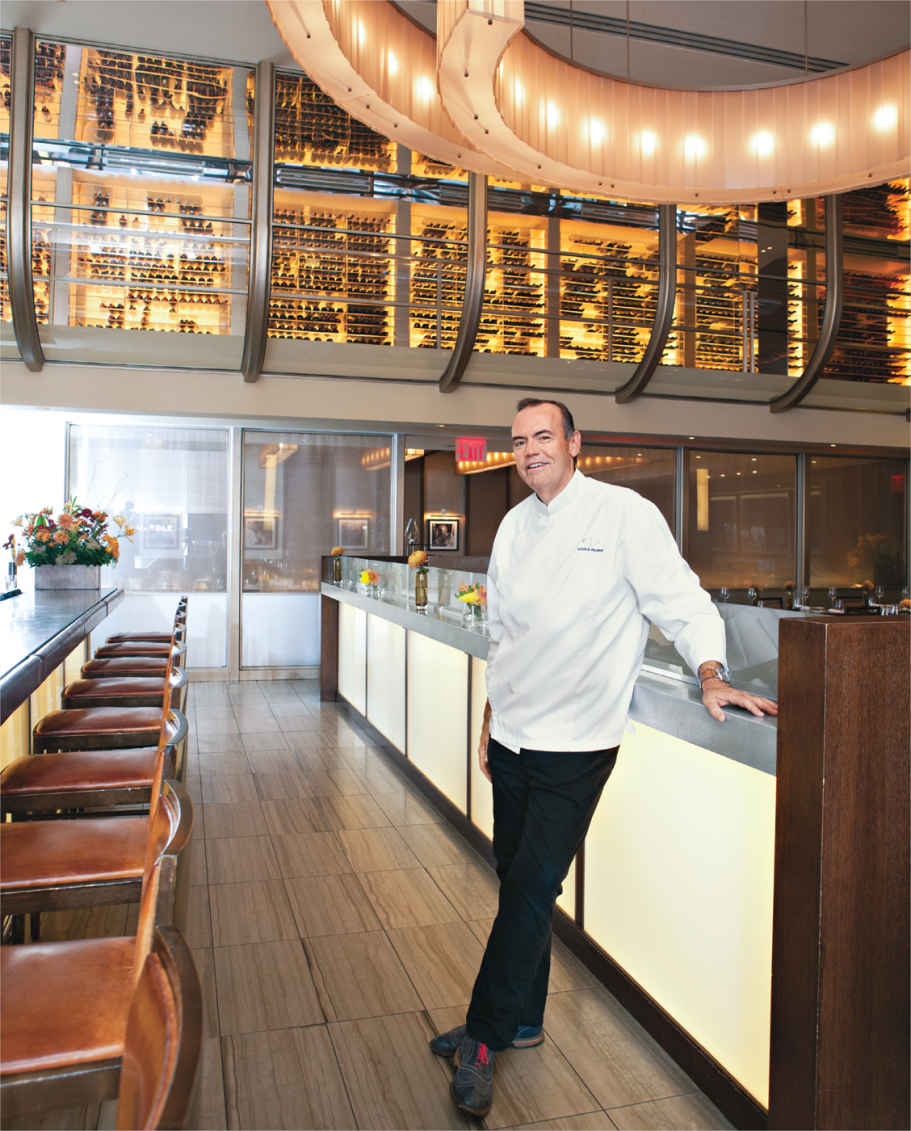
When I came out of culinary school in 1979, nobody was talking about farm to table, environmentally sound agricultural practices, or sustainability in the kitchen. Growing up in upstate New York I knew that many people lived off the land, but Id never put that lifestyle together with fine dining. However, I found myself in the first wave of American chefs who wanted to break barriers by embracing those ingredients native to the United States and traditional recipes that had often been overlooked, as French cuisine had a strong hold on fine dining. I quickly discovered that local and sustainable was part and parcel of this new outlook.
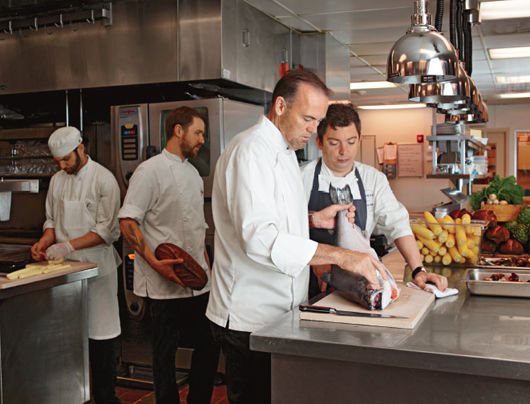
After I graduated from the Culinary Institute of America, I worked for the famed French chef Jean-Jacques Rachou at his acclaimed restaurant in New York City and then went on to work with the esteemed chef/restaurateur Georges Blanc in France. It was Rachous demand for fresh, quality ingredients, as well as my experiences at Georges Blanc, where farmers and local culinary artisans would daily present their wares at the back door of the kitchen for the chefs approval, that awoke in me the possibilities of using the agricultural bounty of the United States in innovative American recipes. It radically changed my perspective to know that American cooking could easily transform itself into American cuisine. That perspective has stuck with me over the years as Ive opened restaurants and hotels throughout the U.S., always looking toward the future and how I could do things better and more progressively in my kitchens, dining rooms, and, later, as a parent.
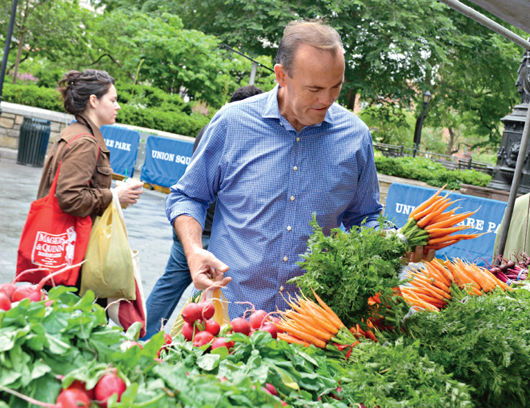
I spent a great deal of time formulating ideas of how I, as a trained chef, could use the experiences I had accumulated to help transform American dining. Once I manned my own kitchen, as chef-owner of Aureole, my first step was to research small, local, dedicated producers whom I could support by featuring their products on the Aureole menu. It was then that my style of cooking (which I eventually termed Progressive American) developed: using local, artisanal products and small farm producers to reinterpret classic European cooking for the American table.
In recent years I have found that almost every city, town, and village has a local farmers market, and farm stands dot roadsides all across America as well. These are the places where locals and weekenders gather, and from which their meals are often created. Often they are a great locale for meaningful communication, the one spot where gossip is passed with impunity. Building relationships with farmers and producers can be done almost anywhere in the country; this makes the food you eat an even more personal experience. Throughout this book I will share some of the purveyors that I use, but I urge you to get to know all of the hardworking farmers and craftspeople in your area. The markets I visit now all have some of the essence of the old Les Halles: spectacular produce, freshly caught seafood, farm-raised game, innovative cheeses, breads even more seductive than those Parisian loaves of my early years, and, of course, their fair share of local characters.

